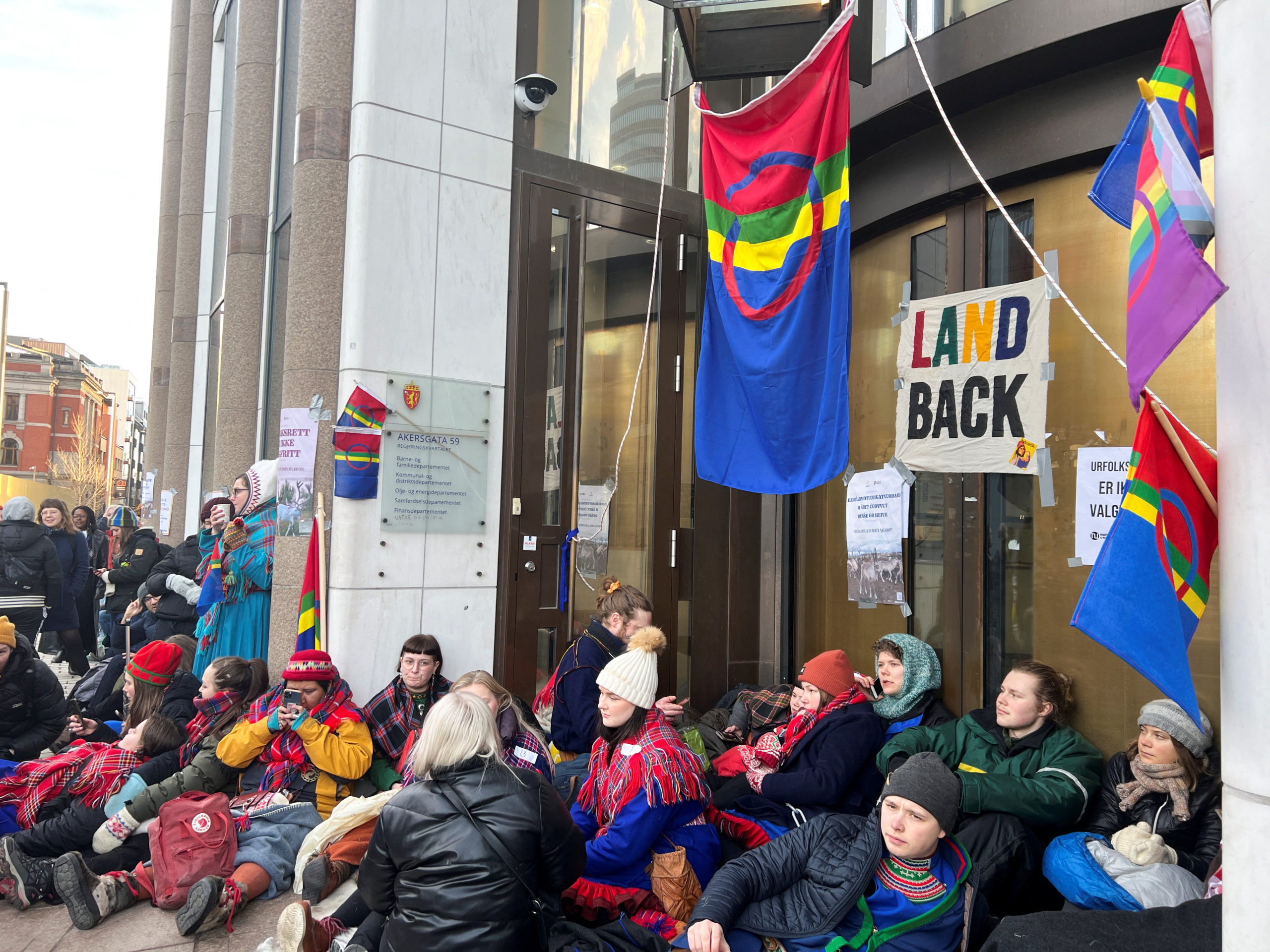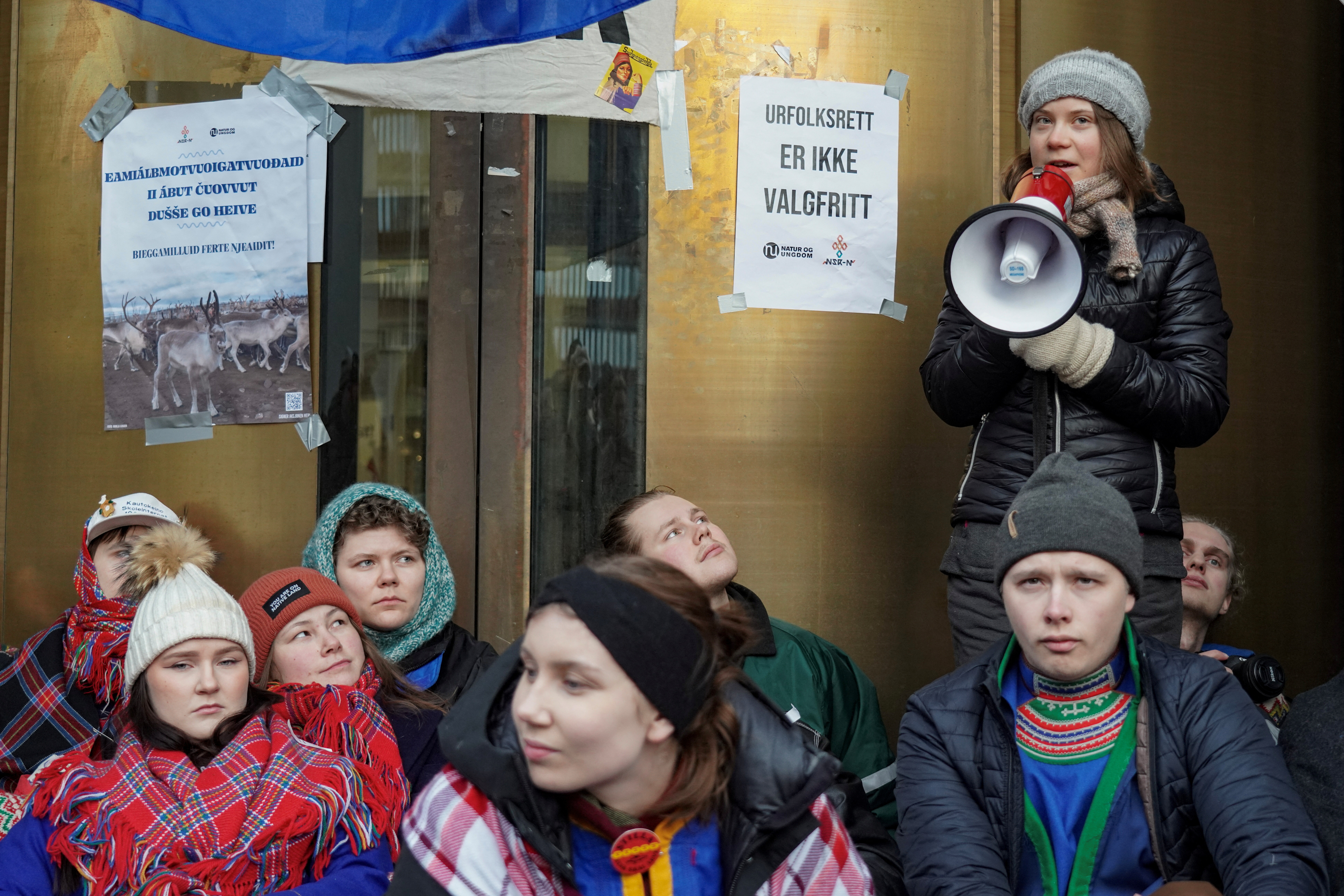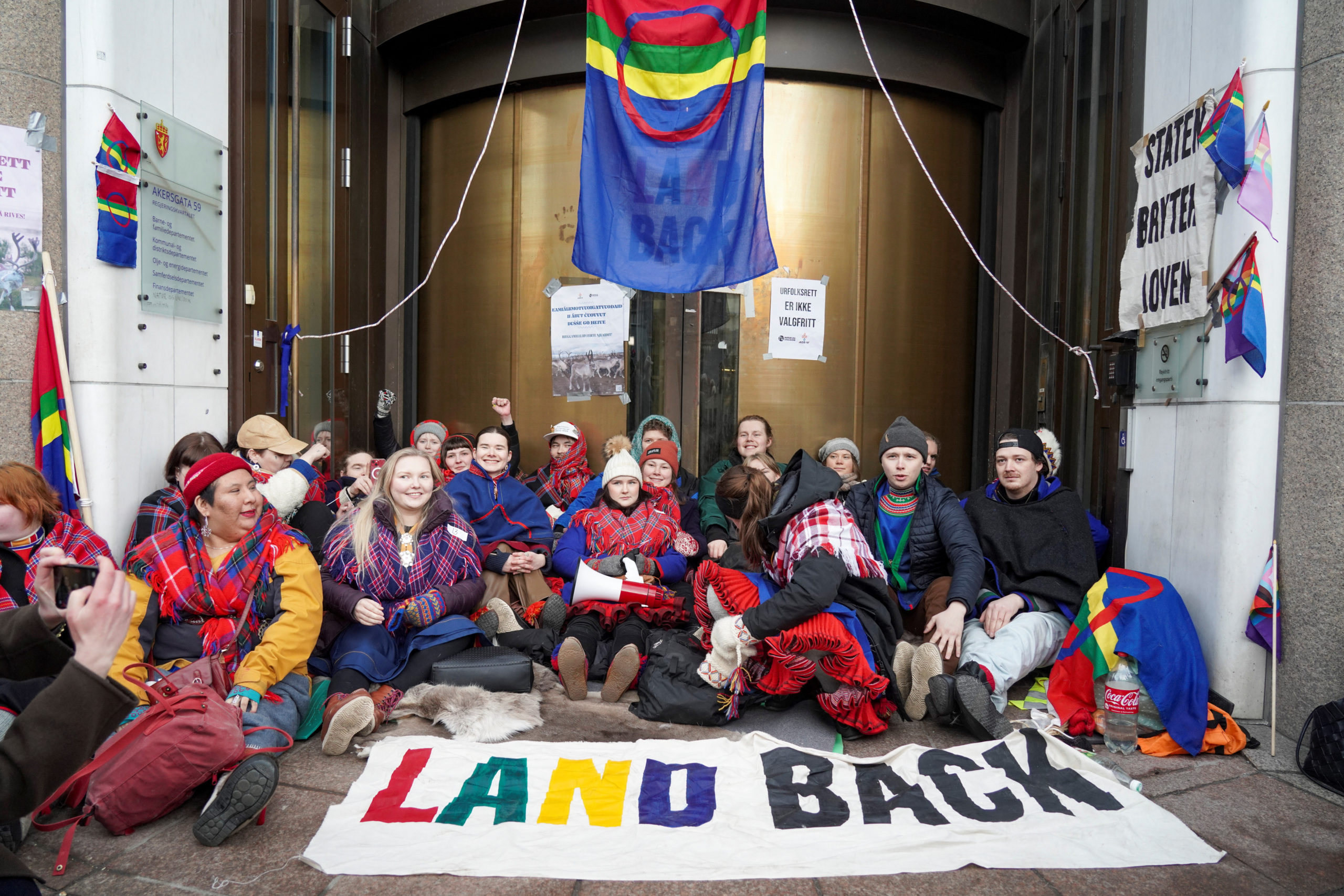Thunberg, Indigenous protesters block Norway energy ministry over wind farms
"Indigenous rights, human rights, must go hand-in-hand with climate protection and climate action."
OSLO — Environmental campaigner Greta Thunberg and hundreds of other activists on Monday blocked entrances to Norway’s energy ministry, protesting against wind turbines built on land traditionally used by Indigenous Sámi reindeer herders.
Thunberg, a vocal advocate for ending the world’s reliance on carbon-based power, said the transition to green energy could not come at the expense of Indigenous rights.
“Indigenous rights, human rights, must go hand-in-hand with climate protection and climate action. That can’t happen at the expense of some people. Then it is not climate justice,” Thunberg told Reuters while sitting outside the ministry’s main entrance, where she had chained herself to other demonstrators.
Norway’s supreme court in 2021 ruled that two wind farms built at Fosen in central Norway violated Sámi rights under international conventions, but the turbines remain in operation more than 16 months later.
Police on Monday afternoon cleared one side entrance to the government building complex housing the energy ministry, carrying away some demonstrators.
“Right now I mostly feel very, very convinced that the Sámi at Fosen should get their rights, I feel this very strongly and there are a lot of emotions,” one of the demonstrators, who gave her name as Joni, told Reuters after being removed.
Reindeer herders in the Nordic country say the sight and sound of the giant wind power machinery frighten their animals and disrupt age-old traditions.
“We are here to demand that the turbines must be torn down and that legal rights must be respected,” said Sámi singer-songwriter, actress and activist Ella Marie Haetta Isaksen.
She and a dozen other Sámi demonstrators had occupied the ministry’s reception area since Thursday. Police forcibly removed them around 2:30 a.m on Monday and detained them before releasing them.
The Sámi protesters wore their traditional costume, often called gakti, inside out as a sign of protest.
The ministry said the ultimate fate of the wind farms is a complex legal quandary despite the supreme court ruling and is hoping to find a compromise.
The court’s verdict did not say what should happen next to the 151 turbines, which can power some 100,000 Norwegian homes, or what should happen to the dozens of kilometers of roads built to facilitate the construction.
“We understand that this case is a burden for the reindeer herders,” Minister of Energy and Petroleum Terje Aasland said in a statement to Reuters.
“The ministry will do what it can to contribute to resolving this case and that it will not take longer than necessary,” he added.
Owners of the Roan Vind and Fosen Vind farms include Germany’s Stadtwerke Muenchen, Norwegian utilities Statkraft and TroenderEnergi, as well as Swiss firms Energy Infrastructure Partners and BKW.
“We trust that the ministry will find good solutions allowing us to continue the production of renewable energy while maintaining the rights of the reindeer owners,” Roan Vind said in a statement.
Utility BKW said it expected the wind turbines to remain in place, with compensatory measures to ensure that the rights of the Sami reindeer herders are guaranteed.
Stadtwerke Muenchen declined to comment.
Statkraft and Energy Infrastructure Partners were not immediately available for comment.
Additional reporting by Nora Buli.
This article has been fact-checked by Arctic Today and Polar Research and Policy Initiative, with the support of the EMIF managed by the Calouste Gulbenkian Foundation.
Disclaimer: The sole responsibility for any content supported by the European Media and Information Fund lies with the author(s) and it may not necessarily reflect the positions of the EMIF and the Fund Partners, the Calouste Gulbenkian Foundation and the European University Institute.




